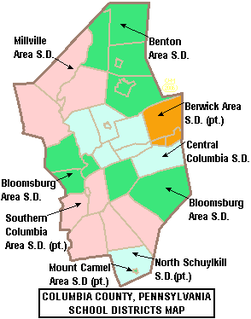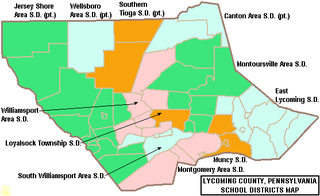| Vida Charter School | |
|---|---|
| Address | |
120 E Broadway , , 17325 | |
| Information | |
| School type | Public Charter |
| Founded | initially approved 2009 |
| Founder | April Yetsko, Founder and former Principal/CEO |
| School board | 9 locally selected members |
| Oversight | Gettysburg Area School District, Hanover Public School District, Pennsylvania Department of Education |
| Principal | Christine Miller, Executive Director former Ms April Yetsko Chief Executive Office |
| Faculty | 34 teachers (2015) [1] |
| Grades | K-6 (2013) |
| Gender | female and male |
| Age | 5 yearsto 12 years old |
| Number of pupils | 255 (2016-17) [2] 241 pupils (2015-16) Contents
|
| • Kindergarten | 46 (2015), 44 (2012), 46 (2010) |
| • Grade 1 | 41 (2015), 44 (2012), 51( 2010) |
| • Grade 2 | 37 (2015), 48 (2012), 21 (2010) |
| • Grade 3 | 43 (2015), 25 (2012), 18 (2010) |
| • Grade 4 | 23 (2015), 15 (2012), 15 (2010) |
| • Grade 5 | 24 (2015), 14 (2012), 10 (2010) |
| • Grade 6 | 17 (2015) |
| Language | English / Spanish |
| Tuition | set by PDE based on student's home district |
| Charter approved | 12/01/2009 [6] |
| Charter Expiration Date | 11/30/2014 extended to 11/30/2019 |
| Website | http://www.vidacharterschool.com/pages/Vida_Charter_School |

Vida Charter School is a small, public, regional charter school in Gettysburg, Pennsylvania. [7] It is one of two public charters schools operating in Adams County in 2014. [8] In 2016, the school's enrollment increased to 255 pupils kindergarten through 6th grade, with 47% of its pupils eligible for a federal free or reduced price lunch due to the family meeting the federal poverty level. [9] Additionally, 5.88% of students receive special education services, while 4% of students are identified as gifted. Fifty-nine percent (59%) of the pupils are Hispanic and 37% are Caucasian. In 2016, 18% of the teachers were rated "Non-Highly qualified" under No Child Left Behind. In 2015 the school employed 15 teachers yielding a student:teacher ratio of 15:1. [10] The school is a federal Title I school. The school provides full day kindergarten.
A charter school is a school that receives government funding but operates independently of the established state school system in which it is located. Charter schools are an example of public asset privatization.

Gettysburg is a borough and the county seat of Adams County in the U.S. state of Pennsylvania. The Battle of Gettysburg (1863) and President Abraham Lincoln's Gettysburg Address are named for this town. The town hosts visitors to the Gettysburg National Battlefield in the Gettysburg National Military Park. As of the 2010 census, the borough had a population of 7,620 people.
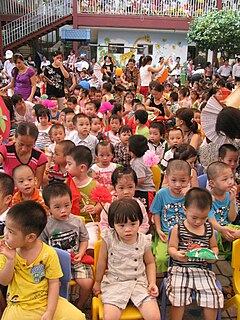
Kindergarten (, ; from German [ˈkɪndɐˌɡaːɐ̯tn̩] is a preschool educational approach based on playing, singing, practical activities such as drawing, and social interaction as part of the transition from home to school. Such institutions were originally created in the late 18th century in Bavaria and Strasbourg to serve children whose parents both worked outside home. The term was coined by the German Friedrich Fröbel, whose approach globally influenced early-years education. Today, the term is used in many countries to describe a variety of educational institutions and learning spaces for children ranging from one to seven years of age, based on a variety of teaching methods.
In 2014, the school's enrollment rose to 214 pupils Kindergarten through 6th grade, with 62% of its pupils eligible for a federal free or reduced price lunch due to the family meeting the federal poverty level. [11] Additionally, 8.88% of students received special education services, while 1% of students were identified as gifted. Fifty-five percent of the pupils were Hispanic and 35% were Caucasian. In 2013, the School's enrollment was 198 pupils in grades kindergarten through 5th grades, with 59% of its pupils eligible for a federal free or reduced price lunch due to the family meeting the federal poverty level. [12] Additionally, 12.62% of students received special education services, while 2% of students were identified as gifted. Forty six percent (46%) of the pupils were Hispanic and 44.95% are Caucasian. According to a report by the Pennsylvania Department of Education, 15% of the school's teachers were rated "Non‐Highly Qualified" under the federal No Child Left Behind Act. [13] In 2012, the school employed 11 teachers. [14] Vida Charter School provided a dual language immersion program in both English and Spanish. [15]
The term Hispanic refers to the people that originate from, or reside in, a former Spanish Empire viceroyalty.
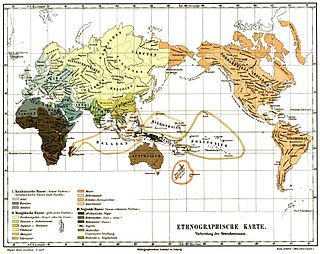
The Caucasian race is a grouping of human beings historically regarded as a biological taxon, which, depending on which of the historical race classifications is used, has usually included ancient and modern populations from Europe, Western Asia, Central Asia, South Asia, North Africa, and the Horn of Africa.
In 2012, enrollment was 161 pupils in grades first through 6th, with 101 pupils eligible for a federal free or reduced price lunch due to the family meeting the federal poverty level. [16] The school employed 9 teachers yielding a student-teacher ratio of 18:1. [17] None of the pupils received special education services.
In Pennsylvania, public charter schools are initially approved and subsequently overseen by the local school board (LEA). [18] If the local school board denies the charter school's application, the prospective Charter School may appeal to the state's Charter School Appeal Board. Once approved by the local school district, the Charter is governed by a locally selected Board of Trustees. Vida Charter has five (5) Board members, one of whom is from Hanover, Pennsylvania. They make in-depth, annual reports to the Pennsylvania Department of Education. In Pennsylvania, public charter schools are a public school alternative to the local public schools. Students may seek admission to a local charter school. The student's home public school district pays the tuition costs on the student's behalf. Additionally, when the local school district provides transportation to its students it must also provide transportation at no cost to charter school students, when the receiving school is within 10 miles of the District's borders. [19] Pennsylvania charter schools have the same academic accountability as traditional public schools and must give the PSSAs to their pupils each year, working to achieve AYP status. [20]
The Pennsylvania Department of Education is the executive department of the state charged with publicly funded preschool, K-12 and adult educational budgeting, management and guidelines. As the state education agency, its activities are directed by the governor appointed Pennsylvania's Secretary of Education. The agency is headquartered at 333 Market Street in Harrisburg. The Pennsylvania Department of Education oversees 500 public school districts of Pennsylvania, over 170 public charter schools (2019), Career and Technology Centers/Vocational Technical schools, 29 Intermediate Units, the education of youth in State Juvenile Correctional Institutions, and publicly funded preschools. In 2019, the Pennsylvania Department of Education employs approximately 500 persons.
Vida Charter School applied for authorization of its charter in November 2007. Both the Gettysburg Area School Board and the Hanover Public School District Board rejected the application. [21] In April 2008, the school's founders applied again to Gettysburg Area School Board and Hanover Public School District. When it was once again rejected, the school's founders appealed the decision to the Pennsylvania Charter School Appeal Board. [22] Vida Charter School's application was approved. [23] [24]
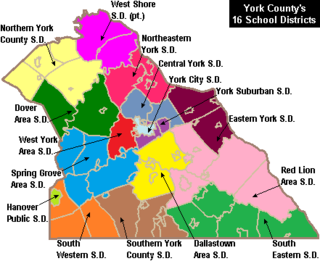
Hanover Public School District is small, urban, public school district located in York County in the borough of Hanover, Pennsylvania. The District encompasses approximately 4 square miles (10 km2). According to 2000 federal census data, Hanover Public School District served a resident population of 14,535. In 2010, the United States Census Bureau reported the District's population had increased to 15,307 people. The educational attainment levels for the Hanover Public School District population were 84.8% high school graduates and 16.5% college graduates.
According to PA Charter School law, if more students apply to attend than there are open slots available, Vida Charter School is required to use a random lottery system to select new incoming students. [25] According to the Charter School law, siblings (brothers and sisters), and children of individuals who help establish a charter school, are granted an "admissions preference." Students residing in the Gettysburg Area School District are selected first, according to the number of slots available for students. If there is space available for more students, seats will be declared open for out-of-District students. [26]
The Lincoln Intermediate Unit IU12 provides Vida Charter School with a wide variety of services like specialized education for disabled students and hearing, speech and visual disability services, criminal background check processing for prospective employees and professional development for staff and faculty. [27]
